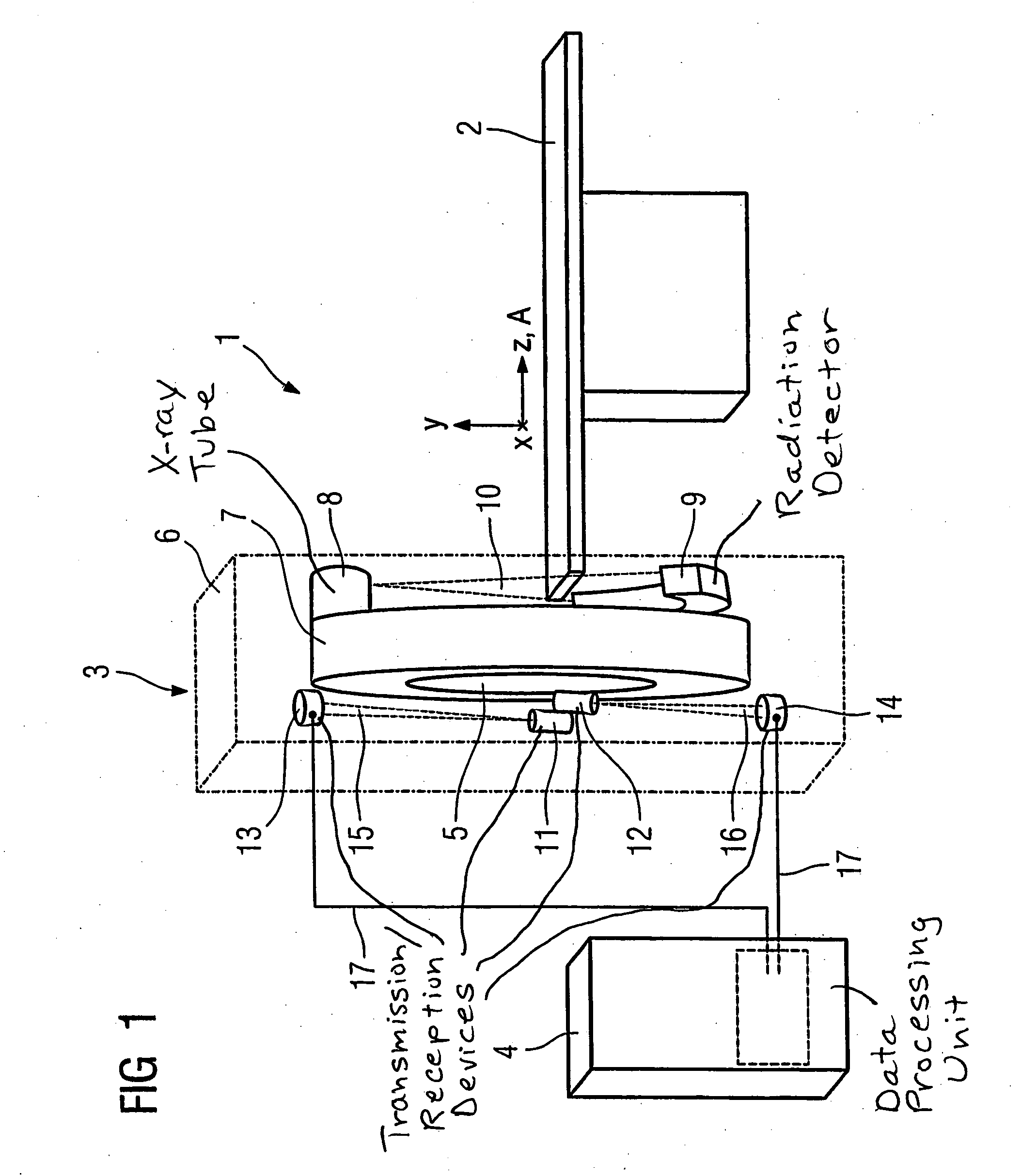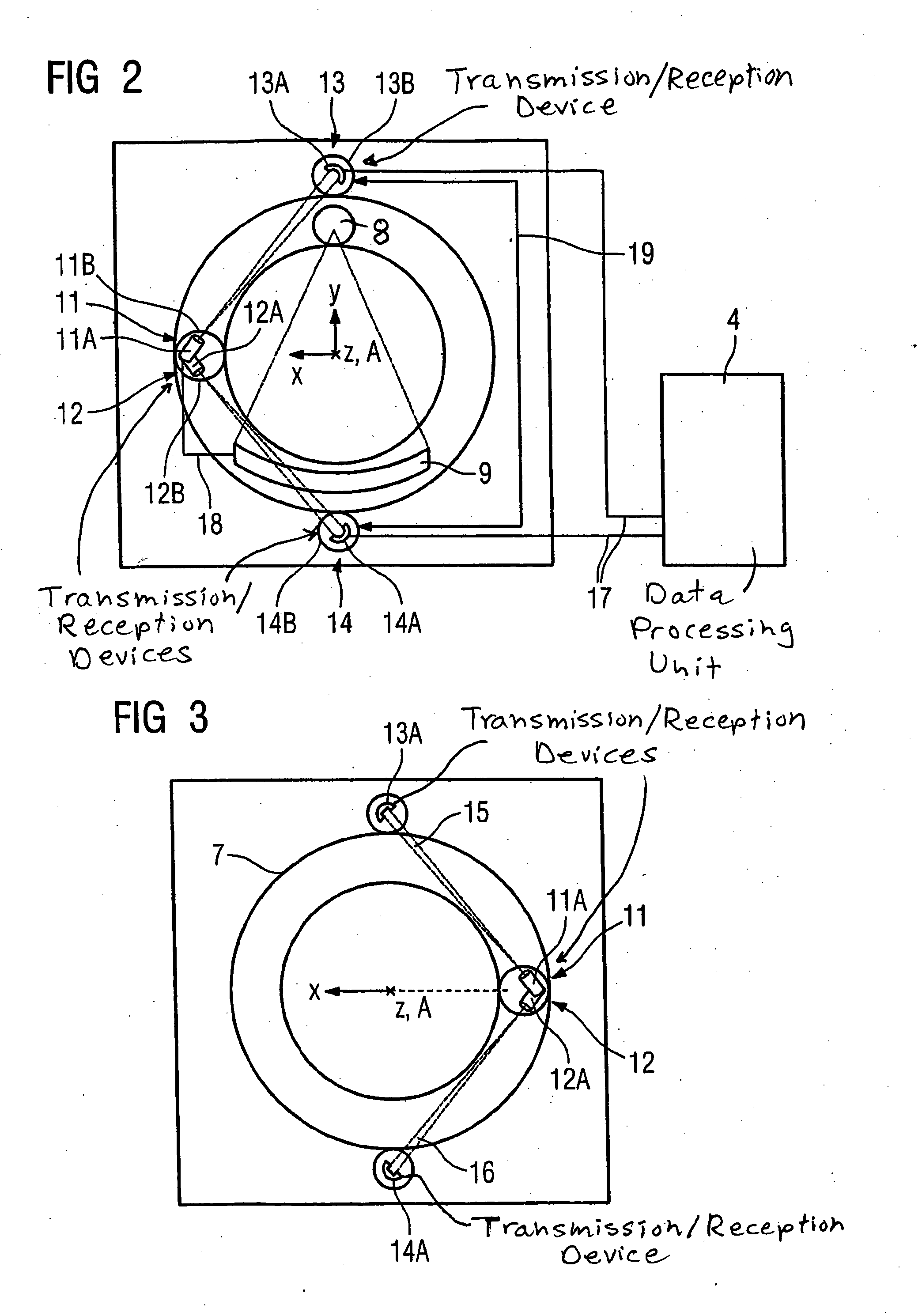Device for Contact-Free Transmission of Signals and Measured Data in a Computed Tomography Apparatus
a computed tomography and signal technology, applied in tomography, instruments, applications, etc., can solve the problems of inability to transmit signals between a first transmission/reception device and a second transmission/reception device, low electromagnetic interference radiation radiation, etc., to achieve high data rate, reduce the rate of transmission, and build more simply and compact
- Summary
- Abstract
- Description
- Claims
- Application Information
AI Technical Summary
Benefits of technology
Problems solved by technology
Method used
Image
Examples
Embodiment Construction
[0043] For simplification, unidirectional transmission of signals is described. Transmission in the opposite direction ensues analogously. In particular a bidirectional transmission of signals is possible with the described device.
[0044]FIG. 1 shows a schematic design of a computed tomography scanner 1 with a patient bed 2, a gantry 3 and a data processing unit 4. The gantry 3 exhibits a central opening 5 into which the patient bed 2 with a patient located thereupon can be run in a z-direction given an examination. The gantry 3 has a stationary unit 6 and an x-ray device 7 rotatable around a z-axis A. The x-ray device 7 comprises an x-ray tube 8 and an oppositely-arranged detector 9. An x-ray beam emanating from the x-ray tube 8 is designated with the reference character 10. A second transmission / reception device 11 and a further second transmission / reception device 12 are mounted on the x-ray device 7. These are offset in the z-direction and mounted with the same radial separation...
PUM
 Login to View More
Login to View More Abstract
Description
Claims
Application Information
 Login to View More
Login to View More - R&D
- Intellectual Property
- Life Sciences
- Materials
- Tech Scout
- Unparalleled Data Quality
- Higher Quality Content
- 60% Fewer Hallucinations
Browse by: Latest US Patents, China's latest patents, Technical Efficacy Thesaurus, Application Domain, Technology Topic, Popular Technical Reports.
© 2025 PatSnap. All rights reserved.Legal|Privacy policy|Modern Slavery Act Transparency Statement|Sitemap|About US| Contact US: help@patsnap.com



